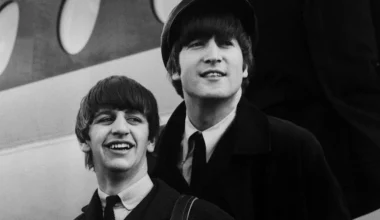Managing the balance of power within a rock band is no small feat. For a while, it can work out smoothly, but once someone tries to take the reins, it can set off a chain reaction of wrong moves and frayed relationships.
Pink Floyd’s history is no exception. Although the band managed to endure even after Roger Waters stepped up as the dominant creative force, David Gilmour later reflected on how difficult that era became, particularly with projects like The Wall and The Final Cut.
By the time Waters took control, Pink Floyd was already in a fragile place. They had long left behind the psychedelic era led by Syd Barrett, and now much of the creative direction came from Waters’ introspective, often dark, commentary on society. While his lyrical depth helped shape the band’s later success, his influence soon became all-consuming.
The shift began to show with Dark Side of the Moon, an album that didn’t just flirt with success but held a record-breaking spot on the charts for nearly a decade. The accomplishment thrust the band into new territory, but it also came with an added layer of pressure. While Waters claimed to stay grounded, the reality in the studio was far more combative. Tensions bubbled over during the recording of The Wall, where even the process itself turned into a battlefield.
By the time The Wall sessions were underway, Waters’ vision took center stage in nearly every detail of the production. Keyboardist Richard Wright later revealed, as seen in the Live at Pompeii film, that the band was battling internally, and those struggles only worsened as Waters’ ambition grew.
At one point, Waters even fired Wright from the project, creating a lasting rift. Much of the album ended up being recorded by Waters and Gilmour, with orchestration by Michael Kamen and other backing musicians filling in the gaps.
After The Wall, Gilmour was creatively exhausted.
Reflecting on the experience, he later told Creem magazine that working on The Wall and The Final Cut left him drained: “The Final Cut and making The Wall film were both nearly impossible.
The thought of continuing with Roger in that frame of mind was far worse than the thought of him going. Roger wanted to do all the writing. He wanted to take over the whole thing.”
For Gilmour, Waters’ near-complete control had made working together almost unbearable.
The tension between Gilmour and Waters culminated in a standoff. Waters may have believed he was the heart and soul of Pink Floyd, but Gilmour pushed back, and when Waters eventually left the band, Gilmour saw a path forward without him. Despite Waters’ protests, Gilmour felt that continuing the band without Waters would avoid being dragged into yet another elaborate concept album with limited input from others.
Gilmour would stay with Pink Floyd through their final release, The Endless River, but it was a far cry from the band’s former, groundbreaking days. In the end, Pink Floyd’s creative impasse led them down separate paths, with Gilmour finding satisfaction in working on The Division Bell, rather than enduring another exhausting conflict over the band’s direction.








